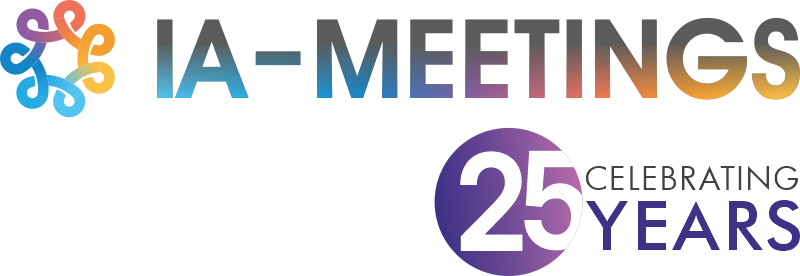Conferences play a crucial role in sharing knowledge, networking, and promoting collaboration across different industries. However, effectively engaging the audience can be quite challenging amidst the abundance of information and distractions present at these events. Therefore, organizers must prioritize audience engagement to ensure that conferences leave a lasting impact. We have compiled a list of creative ideas to make conferences more engaging for attendees. These ideas can be used to make conferences more interactive and fun for everyone involved, regardless of their level of technical expertise.
1. Interactive Workshops: To make a conference more engaging, incorporate interactive workshops that encourage active participation. These workshops should include group discussions, hands-on activities, and problem-solving sessions relevant to the conference theme. They provide opportunities for attendees to learn from each other, apply what they’ve learned in a practical setting, and build problem-solving and collaboration skills.
2. Live Polls and Surveys: Incorporating technology into the sessions can help organizers conduct live polls and surveys, which can be an excellent way to engage their audience and gather feedback in real-time. Through live polls and surveys, one can ask their audience questions and get immediate responses, which can help them tailor their presentation to their needs and preferences. Additionally, this can create a more interactive and collaborative environment, allowing the audience to feel more involved and invested in the session. Utilize technology to conduct live polls and surveys during sessions. This not only gathers valuable feedback but also encourages real-time participation from the audience.
3. Gamification Elements: Add fun games like quizzes and scavenger hunts to their conference to make it more engaging. Encourage participation by offering incentives or rewards.
4. Q&A Sessions: Include interactive Q&A sessions after presentations or panels to enhance attendees’ experience. Encourage questions and insights from attendees to promote open communication and a sense of community. Plan these sessions to make the most of attendees’ time and investment. Allow time for Q&A sessions after each presentation or panel. Encourage questions and insights from attendees.
5. Networking Opportunities: If organizers want to make the most out of networking at an event, organizers should create some dedicated areas or activities that encourage people to interact with each other. Organizers could set up some zones where folks can hang out and chat, or organize activities that help attendees get to know one another. Additionally, organizers might want to check out some networking apps that can connect organizers with others who share their interests or job fields. That way, organizers can keep building their network even after the event is over!
6. Virtual Reality Experiences: Virtual Reality experiences enhance engagement and provide immersive learning opportunities, including virtual tours, interactive simulations, and product demonstrations. Integrating VR can create engaging, interactive, and memorable learning environments, helping learners to better understand complex concepts, retain information longer, and develop skills more effectively. As such, businesses and academic institutions should explore VR as an important tool for enhancing learning outcomes.
7. Crowdsourcing Ideas: To make the conference more collaborative, invite attendees to share their ideas and solutions for the topics being discussed. Show their contributions in real time to inspire more participation. This will help create a friendly and dynamic environment where people can share knowledge and learn from each other.
8. Storytelling Sessions: Organize sessions of storytelling featuring industry experts or inspirational speakers. Storytelling captivates and makes information relatable. Experts can share their experiences, challenges, and lessons learned to provide valuable insights. Hosting such sessions establishes thought leadership and commitment to professional development.
9. Interactive Exhibits: If a conference incorporates an exhibition area, it is essential to ensure that the participating exhibitors offer interactive displays or demonstrations that actively engage attendees. This initiative can involve interactive technology showcases, live product demonstrations or interactive installations. By providing these engaging and interactive opportunities, the exhibitors will successfully capture the attendees’ attention, increase their interest in the event, and positively impact their overall experience.
10. Social Media Engagement: To enhance engagement levels before, during, and after a conference, it is recommended to leverage social media platforms. This can be achieved by creating dedicated hashtags and hosting live Q&A sessions on social media platforms. In addition, sharing behind-the-scenes content can also be an effective way to encourage conversations among attendees. By implementing these practices, conference organizers can boost interaction levels, leading to an overall successful event.
11. Interactive Technology Platforms: Use interactive tech platforms like event apps or virtual event platforms with live chat, virtual networking, and interactive scheduling to create a more engaging and personalized event that fosters better communication, networking, and satisfaction.
12. Workshop Follow-ups: One effective way to continue engagement after a conference is to offer post-conference follow-up activities, such as webinars, workshops, or online discussion forums. These activities can help attendees to continue learning and collaborating.
13. Feedback and Evaluation: Evaluate audience feedback post-conference to measure the effectiveness of engagement strategies used and gather suggestions for improvement. This ensures that events are optimized to achieve desired outcomes and that resources are used effectively.
Through the implementation of these strategies designed to promote audience engagement, conference organizers can create immersive and memorable experiences that resonate with attendees long after the event has concluded. Engaged audiences not only derive greater value from conferences but also contribute to a vibrant and dynamic knowledge-sharing ecosystem. It is imperative, therefore, that organizers carefully consider the most effective methods of engaging their audience, such as interactive workshops, collaborative sessions, and thought-provoking panel discussions that encourage active participation. By doing so, organizers can foster a culture of engagement and intellectual curiosity that will have a lasting impact on attendees and contribute to the continued success of the conference.
